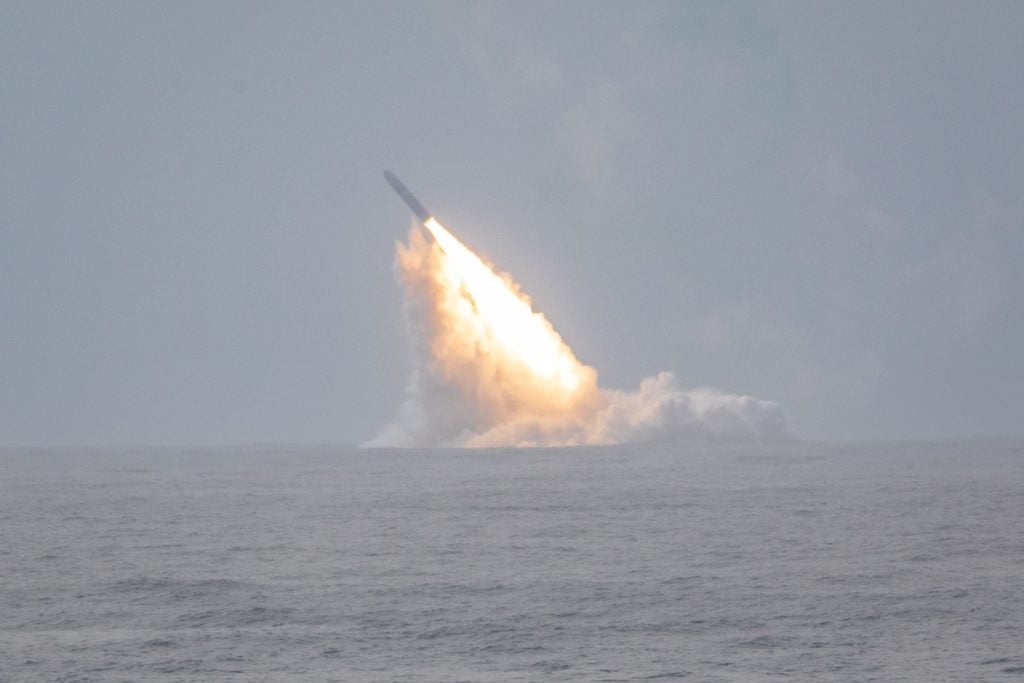In a demonstration of commitment to bolster the Trident II strategic weapon system, a cornerstone of naval defence for both the United States and the United Kingdom, Lockheed Martin and the Charles Stark Draper Laboratory have secured substantial contracts totalling $4.4bn.
These agreements reinforce the reliability and innovation of the Trident II strategic weapon system, coming from the US Navy's recent successful test launch of the Trident II D5 life extension fleet ballistic missile.
Lockheed Martin's contract, awarded to support the US Navy, encompasses the technical and engineering support essential for maintaining and sustaining the Trident II strategic weapon system mark 6 guidance subsystem. Additionally, it supports research and development efforts related to the strategic guidance, navigation, and control systems for developing the Mark 7 guidance subsystem.
This contract also integrates with the construction of the Columbia/Dreadnought-class submarines and addresses reentry subsystems. These efforts also extend to a foreign military sale to the United Kingdom.
The UK has committed more than £800m ($1bn) to a service life extension programme for the Trident II D5 intercontinental ballistic missiles (ICBMs) that the Royal Navy operates as part of the country's strategic continuous at-sea nuclear deterrent programme.
A legacy of reliability in naval defence
The Charles Stark Draper Laboratory will play a role in executing these contracts. With work predominantly based in Cambridge, Massachusetts, these endeavours represent a collaborative effort to ensure the continued effectiveness and reliability of the Trident II Strategic Weapon System.
The recent Demonstration and Shakedown Operation-32 (DASO-32) marked a milestone for the Trident II D5 missile, achieving 191 successful test launches since its design completion in 1989. This record shows the missile's reliability. In another recent Trident II D5 milestone, Northrop Grumman made their 2,000th rocket motor for the US Navy's Trident II D5 submarine-launched ballistic missile.
Jerry Mamrol, Vice President of Fleet Ballistic Missiles at Lockheed Martin, emphasized the enduring partnership with the US Navy and the commitment to advancing sea-based strategic deterrence. "We are proud of Lockheed Martin's nearly seven decades of partnership with the US Navy to develop advanced weapon capabilities to deter threats to our nation and allies.
As the Navy turns towards the future of sea-based strategic deterrence, our new generation of engineers and technicians are poised to meet the challenges of this next era. Lockheed Martin is already preparing and modernizing the missile for its future launch platform, Columbia-class submarines."
According to GlobalData's "US Defense Market 2022-2027" report, the Columbia-class submarines will provide nuclear deterrent capabilities until 2080. the design includes a Common Missile Compartment (CMC), which can host the Trident II ballistic nuclear missile system.
The Trident II D5 missile is deployed aboard US Ohio-class and UK Vanguard-class submarines. This three-stage, solid-propellant, inertial-guided ballistic missile has a nominal range of 4,000 nautical miles and can carry multiple independently targeted reentry vehicles.
From the Polaris to Poseidon to the Trident system, Lockheed Martin's efforts ensure the seaborne leg of the US Nuclear Triad remains robust and dependable.
As the US and UK navies look to the future of naval defence, these contracts lay the foundation for enhanced strategic capabilities that will continue to protect nations and allies for decades.









